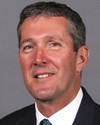Mr. Chairman, the issue here is the determination of the leakage. The chart the minister presented to us is a hypothetical. It compares a group of investors under one scenario, that being income trusts, to the same companies under a corporate scenario. It shows a differential of $500 million. I think the committee really should try to obtain the computations that were requested by Mr. Tait under access to information, so that we can actually see how the $500 million is determined, based on published data of the finance department.
The other issue has to do with the reference to RRSPs being tax exempt. As we all know, RRSPs and RRIFs do have deferred taxes, in fact, but they deregister or people make withdrawals. Taxation revenue is actually paid in cash to the government, but that cash revenue is never included in any analysis of leakage, ever, in any year, even though every year there is revenue coming out of RRIFs and RRSPs.
The issue to me, Mr. Chairman and colleagues, seems to be that the numbers are not as important right now as the methodology. The methodology seems to be flawed.
I think Mr. Fullard has done some work on this, and maybe others have. I believe it's a methodology question, and I'd ask for the opinion of the panellists.


